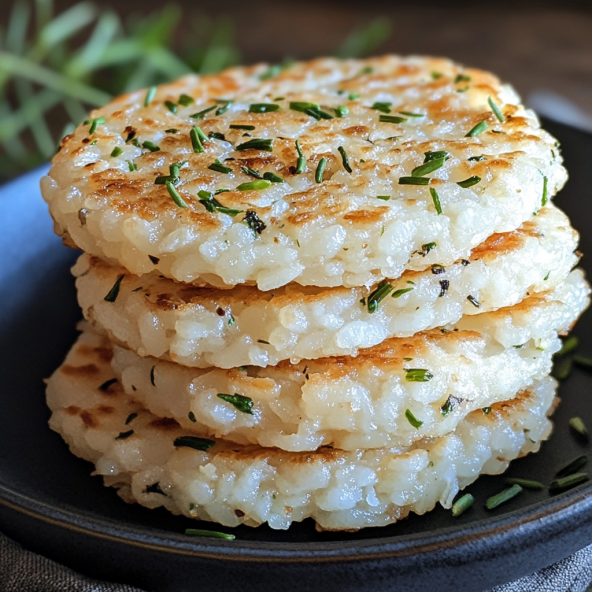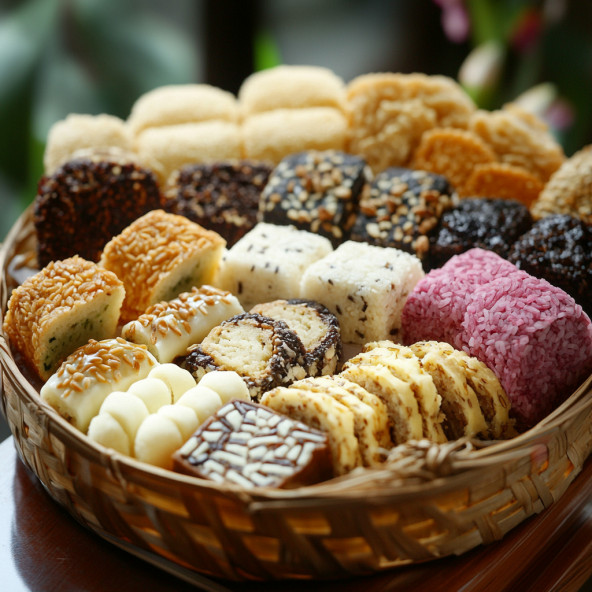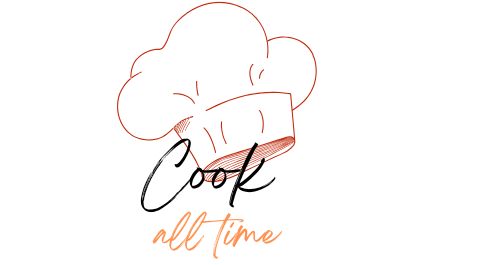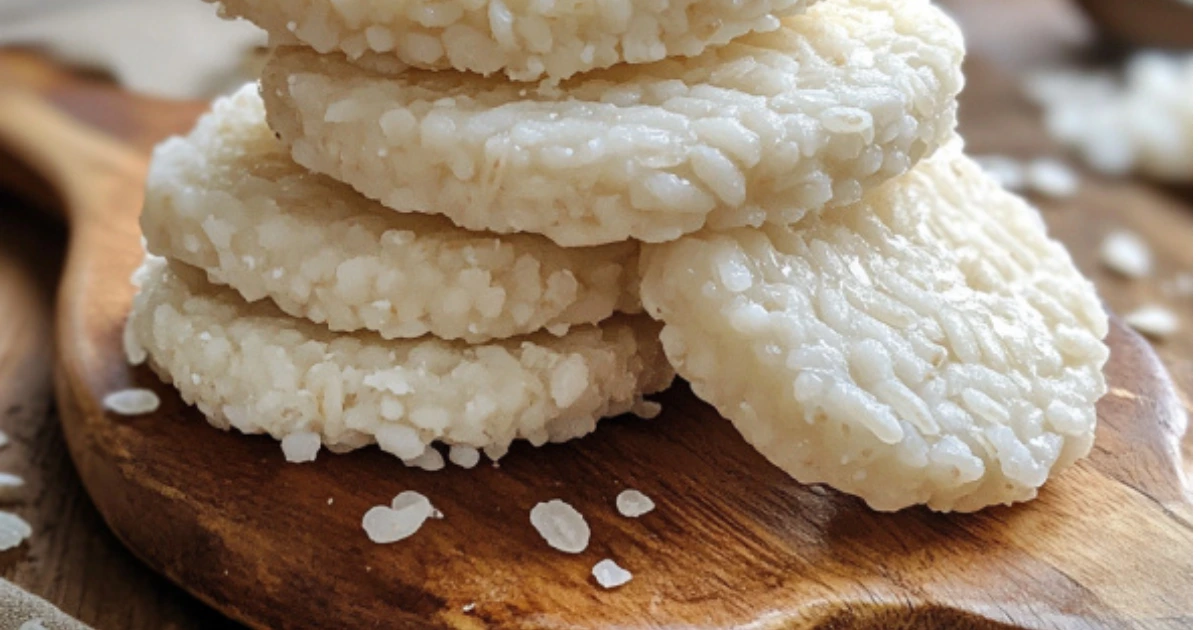Introduction
Rice cakes are simple, versatile, and delicious snacks enjoyed by people across the globe. These lightweight treats come in a variety of flavors and textures, making them a popular choice for health-conscious individuals, snack enthusiasts, and culinary creators. In this article, we will explore the origins, nutritional benefits, types, and various ways to incorporate cakes into your diet. By the end of this read, you’ll understand why rice cakes have become a go-to snack for many, and how you can use them to add excitement to your meals and snacks.
Table of Contents
What Are Rice Cakes?
Rice cakes are made by compressing puffed rice, which results from heating cooked rice under high pressure. This process causes the rice grains to puff and expand, creating a crunchy texture. Traditionally, people have considered rice cakes a healthy snack, but over time, they have evolved to include a variety of flavors, toppings, and variations.
In general, rice cakes are available in different shapes, such as round, square, or rectangular. They can be enjoyed on their own or paired with a wide range of toppings to suit individual tastes. They serve as an excellent option for those seeking low-calorie, satisfying snacks that provide a sense of fullness.
Origins and Historical Significance
Rice cakes have a long history, originating in ancient civilizations. The concept of puffed rice dates back to regions such as ancient China and Japan. Originally, people made rice cakes to preserve rice, making it more portable for long journeys or travel.
Modern Popularity Across the Globe
Today, rice cakes have gained worldwide popularity, especially in Western countries. Thanks to the growing demand for healthier, gluten-free snacks, rice cakes have become a staple in many households. The trend of low-carb and diet-friendly foods has also contributed to their rise in popularity, as rice snacks are often marketed as a light and healthy alternative to other snacks, such as chips or crackers.
Rice snacks are now widely available in supermarkets and health food stores, often packaged in various flavors and styles to appeal to different tastes. Moreover, their adaptability makes them suitable for any meal, whether as a snack or part of a more substantial dish.
Nutritional Value
Rice cakes are known for their light texture, but they can be surprisingly nutrient-dense. While they are low in fat and calories, they offer a good source of carbohydrates that provide a quick energy boost. The nutritional content, however, may vary depending on the type of rice cake and the ingredients used.
Some rice cakes are made using whole grain rice, which offers a richer fiber content compared to refined rice . Additionally, brown rice may provide extra minerals, vitamins, and antioxidants, making them a more nutritious option.
Calories and Macronutrients
Rice cakes are relatively low in calories, making them an ideal snack for those looking to control their calorie intake. A typical serving of a plain rice cake contains around 35–50 calories, depending on its size and ingredients.
- Carbohydrates: Are primarily composed of carbs, with each serving containing approximately 7–12 grams of carbs. These provide a quick source of energy.
- Protein: Although rice cakes are not significant sources of protein, they do provide around 1–2 grams of protein per serving, which can be useful for satisfying hunger.
- Fats: Are very low in fat, with a typical serving containing less than 1 gram of fat.
Gluten-Free and Vegan-Friendly Benefits
One of the major reasons rice cakes have become so popular is their gluten-free nature. Made primarily from rice, they do not contain wheat, making them a great option for individuals with gluten sensitivity or celiac disease. Additionally, rice are naturally vegan-friendly, as they contain no animal-based ingredients. This makes them suitable for those following plant-based diets, as well as those with dietary restrictions.
Comparing Rice Cakes to Other Snacks
When comparing rice cakes to other common snacks, such as chips, crackers, and cookies, rice cakes stand out due to their lower calorie count and versatility. While many snacks can be high in sodium, fat, and sugar, rice offer a cleaner, simpler alternative. Furthermore, they can be easily customized with a variety of toppings to suit individual preferences.
- Rice Cakes vs. Chips: Rice are lighter and typically lower in fat than traditional potato chips. They provide a satisfying crunch without the greasy feel of chips.
- Rice Cakes vs. Crackers: Rice have fewer additives than many store-bought crackers and are usually lower in sodium and preservatives.
- Rice Cakes vs. Cookies: While cookies are often high in sugar and fat, rice are a healthier snack that can be modified to accommodate various flavor profiles.
Types of Rice Cakes
There are several varieties of rice cakes available, each offering a unique flavor and texture. These varieties range from traditional rice cakes to modern, gourmet versions, all of which cater to different tastes and dietary preferences.
Traditional Varieties
Traditional rice cakes typically consist of simple ingredients like puffed rice, salt, and occasionally sugar. These cakes are known for their plain, neutral flavor, making them the perfect base for various toppings and spreads. They are usually available in large, round discs, though they may also come in smaller portions or square shapes.
Commercially Packaged Rice Cakes
Commercially packaged rice cakes are widely available in supermarkets and come in a variety of flavors. Some of the most popular options include:
- Plain : A classic choice, often used as a base for toppings like peanut butter or hummus.
- Flavored : These include sweet or savory varieties, such as cheddar, caramel, or chocolate.
- Multigrain : Made with a blend of different grains, these rice cakes offer added nutrients, such as fiber and protein.
Gourmet and Artisan
In recent years, gourmet rice cakes have emerged as a more upscale option. These rice cakes may feature exotic grains, herbs, spices, or other high-quality ingredients to enhance their flavor and nutritional profile. Gourmet rice are often sold at health food stores or artisanal markets and are marketed as premium snacks with unique flavor profiles.
Health Benefits
Rice cakes not only serve as a convenient snack but also offer several health benefits. Their lightness and low-calorie nature make them an excellent choice for those looking to maintain or lose weight. Additionally, rice cake can contribute to better digestive health and provide energy for physical activity.
Weight Management
Rice cakes are low in calories, which makes them an excellent choice for those trying to manage their weight. They can be consumed between meals as a filling, low-calorie snack without the guilt. When paired with protein-rich toppings such as nut butters or avocado, rice cake can help keep you full longer.
Digestive Health
Whole-grain rice cakes, particularly those made with brown rice, support digestive health by promoting regular bowel movements. Fiber aids digestion and prevents constipation, making rice an excellent option for maintaining gastrointestinal health.
Energy Boosting Properties
The carbohydrates in rice cakes provide a quick energy boost, making them a great snack before or after physical activity. Whether you’re heading to the gym or need an afternoon pick-me-up, rice cake offer a healthy, energizing snack without the added sugar and preservatives found in other options.
How to Incorporate Rice Cakes Into Your Diet
You can incorporate rice cakes into your diet in many different ways. Whether you enjoy them as a snack, a meal base, or as part of a larger recipe, rice cakes easily adapt to fit your dietary needs.
Savory Toppings
- Avocado and Tomato: Top rice cakes with mashed avocado and sliced tomatoes for a healthy, satisfying snack.
- Hummus and Cucumber: Spread hummus on rice and add sliced cucumber for a refreshing, savory option.
- Cheese and Turkey: For a protein-packed snack, top your rice cake with a slice of cheese and lean turkey breast.
Spread avocado and sprinkle chili flakes for a spicy twist, or layer with cottage cheese and tomatoes for a protein boost. Learn more about the benefits of incorporating cottage cheese with recipes from our article delicious cottage cheese recipes.
Sweet Combinations to Try
- Peanut Butter and Banana: Spread peanut butter on rice crackers and top with banana slices for a delicious, nutrient-dense treat.
- Greek Yogurt and Berries: Add a layer of Greek yogurt on your rice cake and top with fresh berries for a sweet, tangy snack.
- Cinnamon and Honey: For a sweet yet simple option, sprinkle rice cakes with cinnamon and drizzle with honey.
In Meals and Snacks
You can use rice cakes creatively in various meals and snacks. Whether as a base for a full meal or as a crunchy snack, these little treats can easily be dressed up to suit different flavor profiles and dietary needs. Try using rice cakes as a low-calorie alternative to bread for open-faced sandwiches or adding them to a salad for an extra crunch.
Popular Rice Cake Recipes
- Rice Cake Breakfast Sandwich: Layer a rice cake with scrambled eggs, avocado, and turkey bacon for a filling breakfast.
- Rice Cake Pizza: Spread tomato sauce on a rice cake, top with cheese and your favorite pizza toppings, and bake for a quick pizza alternative.
- Sweet Rice Cake Bars: Combine rice cake with melted chocolate and dried fruit for a homemade snack bar
Homemade
Homemade rice cake offer a simple yet satisfying snack that you can easily customize to suit your preferences. Making rice cake at home allows you to control the ingredients, ensuring a healthier option than many store-bought varieties. The basic recipe usually involves cooking rice, pressing it into molds, and then baking or air-frying the cakes. For a flavorful touch, you can experiment with seasonings or add-ins like dried fruits, nuts, or seeds.

To make homemade rice crackers, you can use either white or brown rice for added fiber. Additionally, cooking with organic rice and natural sweeteners like honey or maple syrup ensures a cleaner, more nutritious snack.
Some key benefits of homemade rice cake include:
- Control over ingredients: Customize for taste and dietary restrictions.
- Healthier options: No preservatives or artificial additives.
- Affordable: Making them at home is cost-effective compared to store-bought alternatives.
Korean Tteokbokki (Spicy Rice Cakes)
Korean Tteokbokki, a popular dish made with chewy rice cakes, offers a flavorful and spicy way to enjoy rice cakes. Often served as street food in Korea, this dish uses gochujang (Korean chili paste) to create a bold, spicy sauce that perfectly complements the chewy rice cake texture. The combination of the soft, chewy rice cake and the heat from the sauce makes Tteokbokki a comforting and satisfying dish enjoyed by many.
Typically, Tteokbokki includes ingredients like fish cakes, cabbage, and boiled eggs, but you can adjust the recipe to suit your taste. This fusion of flavors and textures makes Tteokbokki a unique and satisfying meal. The recipe is easy to make at home, and it can be served as a snack or a main dish.
Ingredients for Tteokbokki:
- Rice cakes (Tteok)
- Gochujang (Korean chili paste)
- Fish cakes or vegetables
- Sweetener (sugar or honey)
- Sesame oil
Fusion Rice Cake Ideas
Fusion rice cake combine the traditional simplicity of rice caks with various global flavors and ingredients. By adding diverse toppings and fillings, you can create a wide range of exciting and unique dishes. For instance, you can transform rice cake into savory or sweet mini pizzas by topping them with tomato sauce, cheese, and various vegetables.
Another idea is to pair rice cake with ingredients like avocado, smoked salmon, or sriracha for a more sophisticated snack. By blending Eastern and Western culinary traditions, fusion rice cake offer endless possibilities for creative meals.
Some fusion rice cake ideas include:
- Asian-Inspired : Add soy sauce, sesame seeds, and green onions for a savory dish.
- Sweet : Top with chocolate, fruit, or even marshmallows for a dessert twist.
Rice Cakes and Cultural Traditions
Various regions around the world have deep cultural ties to rice cake. In Asia, people use rice cakes as an integral part of celebrations, with each country adding its own unique twist to the dish. In Japan, people consume mochi rice cake during New Year’s celebrations to symbolize good fortune. Similarly, in Korea, it play a significant role in traditional ceremonies and festivals, highlighting their cultural importance across the continent.

In Western cultures, rice cake have found their place as a modern snack, but their history of being linked to festivals and traditions continues to influence their popularity. As we continue to see more global fusion in food, rice crackers have become an internationally recognized symbol of comfort food.
Asia: Staple Food and Celebrations
In many Asian countries, rice cakes are not just a snack—they are part of the very fabric of cultural and religious celebrations. For instance, in China, nian gao (a type of rice cake) is eaten during Chinese New Year to symbolize progress and growth. In Korea, tteok rice cake are essential during holidays like Seollal (Lunar New Year) and Chuseok (Harvest Festival).
Rice cakes hold immense significance in various Asian cultures, symbolizing prosperity and celebration beyond just being a food item. In these cultures, people often make rice cakes with specific ingredients that carry meaning, such as red beans, which symbolize good luck, and black sesame, which represents longevity.
Western Adaptations
Rice cake have found a unique niche in Western cuisine, especially as part of the health food trend. These light, low-calorie snacks are now widely available in supermarkets, often in flavors such as cheddar, caramel, and chocolate. As health-conscious consumers seek alternatives to processed snacks and high-calorie foods, rice cake have gained traction as a go-to option.
In addition, rice crisps have been adapted into different forms, such as rice cake sandwiches or used as the base for a variety of savory dishes, including rice cake sushi. Western cuisine has embraced rice crisps’ versatility, and the fusion of rice cake with other ingredients has paved the way for countless creative recipes.
Environmental and Economic Impact of Rice Cake Production
As rice cake become increasingly popular, it is important to consider the environmental and economic impact of their production. Rice, as a crop, requires significant water resources, which can contribute to environmental strain if not managed sustainably. Additionally, rice farming can be energy-intensive, particularly in regions where water-intensive paddy fields are used.
On the economic front, rice cake production supports local farmers, especially in rural communities where rice is a staple crop. By purchasing rice cake from reputable brands or directly from local markets, consumers help support small-scale farmers and the local economy.
Sustainability of Rice Cultivation
Sustainability is a crucial issue in rice farming. Sustainable rice farming focuses on minimizing water usage, reducing greenhouse gas emissions, and promoting environmentally friendly agricultural practices. As rice cake grow in popularity, it’s vital for both consumers and producers to consider the environmental impact of rice cultivation.
To promote sustainability, consider supporting companies that focus on environmentally responsible farming practices. In turn, these companies help reduce the carbon footprint of rice cake production while supporting the long-term health of ecosystems.
Economic Role in Rural Communities
Rice farming and rice cake production play a significant role in the economies of rural communities. By creating demand for rice products, local farmers benefit from increased sales, which in turn helps boost local economies. Rice cake production also provides employment opportunities in both urban and rural areas, helping to support the livelihoods of many individuals.
For many countries, rice is an essential crop that supports both economic development and food security. As rice crisps continue to be popular, the demand for rice ensures the continued vitality of the rice farming sector.
Common Myths and Misconceptions
Despite their popularity, rice cake are often misunderstood. Some people mistakenly believe that rice cake are empty calories with no nutritional value. While they may be low in fat and calories, rice can provide a healthy snack when paired with the right toppings.
Additionally, some wonder whether rice cake can replace a full meal. While rice cake are a light snack, they are not necessarily a meal replacement unless combined with protein or healthy fats, which can help make them more filling.
Are Rice Cakes Just Empty Calories?
Are often considered “empty calories” because they are low in fat and sugar, and have a light texture. However, when paired with nutritious toppings like avocado, hummus, or peanut butter, rice cake become a nutrient-dense snack. The key is to complement them with ingredients that provide fiber, protein, and healthy fats to maximize their health benefits.
Rice cakes are not inherently empty calories; it’s all about how you prepare and serve them.
Can Rice Cakes Replace a Full Meal?
Rice cakes alone may not be sufficient to replace a full meal. Due to their light texture and low-calorie content, rice typically do not provide enough protein, fiber, and healthy fats to sustain a balanced meal. However, they can serve as a great base for meals when paired with other nutrient-dense foods, such as lean meats, vegetables, or nuts.
FAQs :
Are rice cakes suitable for weight loss?
Yes, rice cakes can be part of a weight loss strategy because they are low in calories. However, pairing them with healthy toppings can help keep you satisfied longer.
How long do rice cakes stay fresh?
Rice cakes typically stay fresh for about 1-2 weeks if stored in an airtight container. For longer storage, you can freeze them.
Are rice cakes safe for toddlers?
Yes, rice cake are generally safe for toddlers but should be served in small pieces to prevent choking.
Can rice cakes be frozen for later use?
Yes, you can freeze rice cake. Simply wrap them tightly in plastic wrap and store them in a freezer bag for up to 3 months.
How are rice cakes made at home?
Rice cakes are made by cooking rice, pressing it into molds, and either baking or frying them to achieve the desired texture.
Conclusion
In conclusion, Rice cakes are more than just a snack; they are a versatile, nutritious, and sustainable food that can be incorporated into your daily meals. From their historical significance to their modern adaptations, rice cakes continue to satisfy a wide range of tastes and preferences

